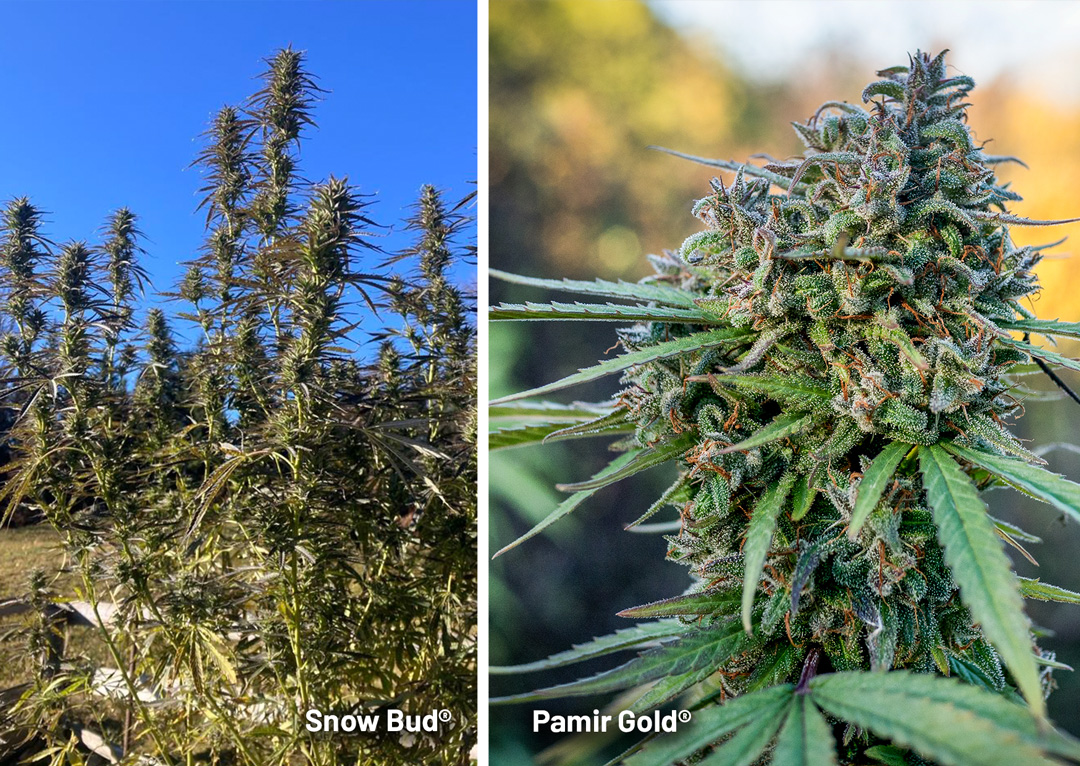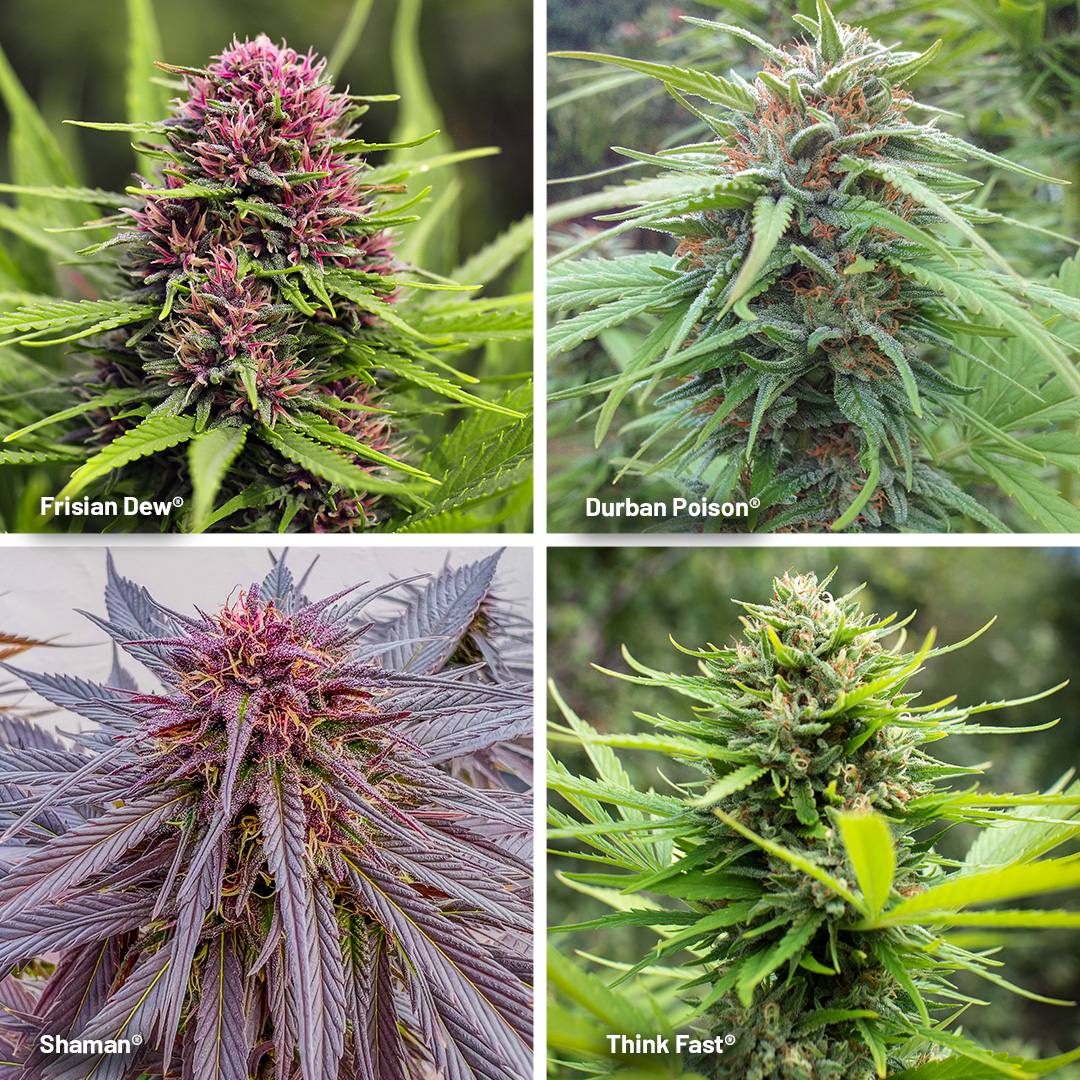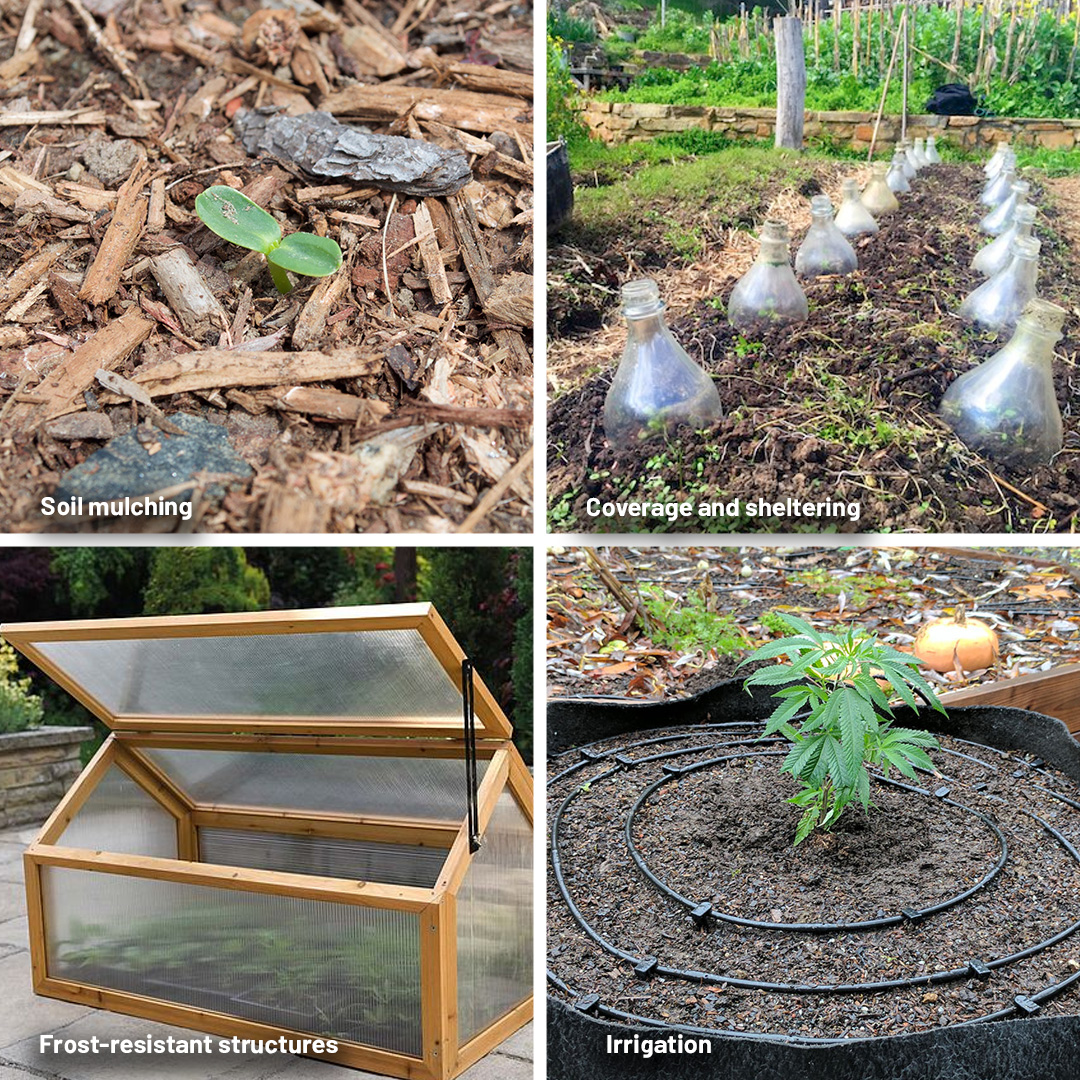How to protect outdoor cannabis from frost

Frost is one of the outdoor growers’ greatest fears. An unexpected late Spring frost can wipe out your prize collection of seedlings. An early hard-frost in Fall/Autumn can mean the end of your crop and rot your buds.
You can control the genetics of the cannabis seeds you grow - but not the climate you grow in. Fortunately, the well-prepared outdoor cannabis grower does have proven options to protect plants and substantially increase the odds of them surviving even if cold weather strikes. This guide explains the strategies that will protect your cannabis plants from frost.
Understand how frost can damage cannabis plants
Frost damage is caused by the freezing of plant moisture within the plant cells. This stops the flow of nutrients, ruptures cell walls and harms the delicate plant tissues. Expose enough of the cannabis plant to frost for long enough and it will be simply unable to recover.
Those growing near the equator will never worry about frost. But many North Americans, Europeans and Southern Hemisphere growers will have to consider frost when planning to plant & harvest their weed.
Some tropical cannabis strains have very little tolerance towards cool conditions. But the use of selective breeding techniques over many generations has allowed the evolution of some strains that are uniquely adapted towards a certain level of frost resistance.
High altitude cannabis seed varieties with natural frost resistance

The 1980’s Dutch Passion breeding project in the Swiss Alps began with some tough Afghani and Western Himalayan cannabis genetics. These were grown at Altitude outdoors over several years. Each year the toughest and best specimens were kept and crossed.
This is what professional breeders name ‘selective breeding’. It is a proven technique used to amplify a particular genetic feature, in this case cold-weather resistance.
After several years the toughest two feminised seed varieties emerged, Pamir Gold & Snow Bud. Each can cope with a couple of days of frost, enough to wipe out average strains. If frost is a serious threat to your outdoor grows then professionally, selectively bred high-altitude cannabis seed varieties should be at the very top of your strain wish-list.
Understanding the last frost date. What does it mean?
The last frost date is the average date of the last frosty night in your area. It gives you an idea of when night-time weather is starting to warm up sufficiently to consider outdoor growing. Research your last frost date online. And note that you can always germinate your cannabis seeds and grow them indoors under LED for a few weeks before your last frost date.
This allows your seedlings to grow indoors protected from the cold weather. The extra growth time produces larger plants thanks to the indoors head-start.
How to prevent any frost-related issues
Often a combination of factors will help the outdoor growers get through a cold spell. This will include buying the right seeds, selecting a favourable grow location, timing your grow well and having a few emergency options in case the going gets really tough.
Grow cold-resistant cannabis seeds

Most quality seedbanks will have a selection of outdoor cannabis seeds. These will be noted for their solid outdoor results. Photoperiod feminised seed varieties such as Frisian Dew, Durban Poison & Shaman are more resistant than most to cold outdoor conditions.
Autoflower seeds are also a particularly smart choice for the outdoor grower. Their short 3-month outdoor grow cycle means autos can be grown at extreme latitudes with the shortest of grow seasons (e.g. Northern Scandinavia). Autos are a perfect option for growing at extreme latitudes with short summers unsuited to outdoor feminised seed varieties.
All autoflower seed varieties tend to grow well outdoors, but Auto Euforia deserves a special mention. She is widely regarded as Dutch Passion’s toughest outdoor auto.
Fast feminised cannabis seed varieties, harvest before the frost arrives
If early frosts in fall/autumn are a regular headache for your traditional strains, it could be time to consider a so-called fast feminised outdoor strain. These grow like normal outdoor feminised strains, but the presence of recessive autoflower genetics allows them to reach harvest around a month earlier than the average outdoor photoperiod strain. This could be the difference between a successful harvest and a frost-related failure.
Think Fast is Dutch Passion’s best fast feminised seed for outdoor growers, often ready for harvest around early-September at European latitudes. If you struggle with frosty weather and wish you could harvest a month earlier than normal Think Fast is the perfect choice.
Choose a suitable grow site
Some outdoor growers look for grow sites with earth banks around the edges to offer protection from the prevailing winds. If you’re growing on your own land, you have maximum flexibility to protect your plants. You can use e.g. tarpaulin covers in the event of extreme weather, and even outdoor heaters if a sharp frost is forecasted.
Time your grow efficiently
Only buy cannabis seeds if you can be confident they will finish in time at your latitude/climate. For some growers this could mean leaning more towards autoflower seeds or fast feminised strains as opposed to traditional feminised outdoor strains.
Many experienced outdoor pros routinely germinate and grow indoors for a few weeks, planting outdoors only once the weather has warmed up sufficiently.
Note that you will have to gradually acclimatise indoor-grown plants to outdoors life for a few hours each day over several days before they are permanently planted outdoors.
| Related: |
| How to acclimatise indoor grown cannabis plants for outdoor life |
Monitor the weather daily
Watch the weather forecast especially at the start and end of the season when frost is most likely. Keep an eye on expected night-time minimum temperatures and don’t hesitate to take action if cold weather is expected.
How to protect outdoor cannabis plants from frost

Cannabis plants grown in containers have the advantage of transportability. If frost/cold is expected simply bring your plants indoors e.g. into a garage/shed overnight. If your plants are rooted directly into the ground, then there are other options available:
Soil mulching
A thick layer (2-4cm /1-2 inches) of mulched organic top covering above the soil acts like a blanket, helping hold the natural warmth of the soil that accumulated during the day. Mulch could be straw, bark, leaves or a mixture.
Coverage and sheltering
Many outdoor cannabis growers make occasional use of shelters to protect their plants from frost. These can be made simply by draping some material over support sticks around your plants. The material could be a light fabric blanket, a tarpaulin or similar. The fabric material should reach down to ground level. This helps retain warmth from the soil, which in turn keeps the frost away.
| Can I use heaters or heat lamps to protect cannabis from frost? Yes! Commercial cannabis growers (& fruit growers) often use electrically powered (e.g. IR) or kerosene-fuelled outdoor heaters to prevent frost from approach near to their crops. These do an excellent job of protecting crops from frost. Heaters can be expensive to run and tend to be used only when essential. They can also be used inside greenhouses/polytunnels where they are especially effective. |
Frost-resistant structures
Cloches, or cold frames, are plastic/glass structures that can be placed around your cannabis plants to protect them. These are typically designed for smaller seedlings and can help protect your seedlings from cool early-season weather by trapping daytime heat inside the cloche and preventing frost damage.
Irrigation
Watering the soil in the afternoon before a frosty night can help. This is because moist soil retains more heat than dry soil.
Final thoughts and bonus tips
Avoiding frost, rather than having to cope with the aftermath, is the preferred option. That may mean growing cannabis seeds (autoflower seeds or fast feminised seeds such as Think Fast) that will finish before harvest arrives.
Growers with unpredictable Spring weather often prefer to start their seedlings indoors, planting out only when the last cold Spring nights have passed.
But if frost is truly unavoidable then the tips above and seed recommendations may help. Professionally bred specialist High Altitude cannabis seeds (Dutch Passion offer Snow Bud & Pamir Gold) are probably your best bet if you want to grow feminised seed varieties in conditions that can get too cold for standard outdoor strains.



























